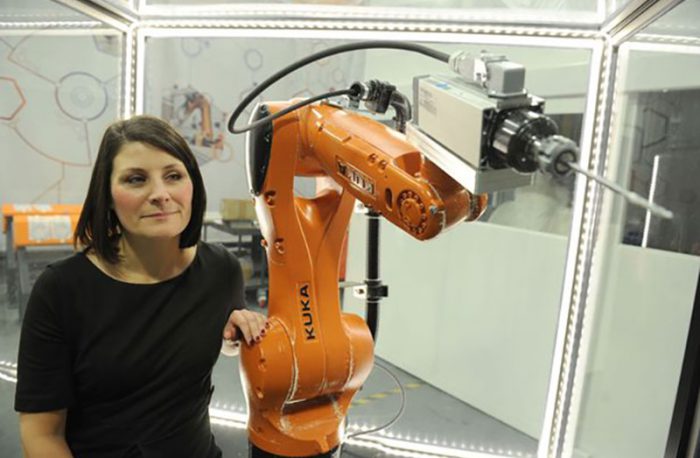Digital Strategy for Science & Manufacturing Businesses

This week, the VEC team were invited by Halton Chamber of Commerce to talk to science and manufacturing businesses in the region about the benefits from better digital strategies post COVID-19.
The majority of businesses in the manufacturing sector have stayed in operation throughout the pandemic. The sector was one of the first to implement social distancing precautions in the workplace and to adopt digital technologies to support teams remotely and provide a platform to enable working from home.
As the sector looks to restart and repurpose for a world post-COVID-19 and Brexit, the event considered where you should start adding digital into your revised strategy to futureproof the business and accelerate digitalisation.
- Start with the business: Digital tools in industry are useful tools, but the demands and the requirements should always come from the core business. What are the challenges today, and what opportunities do you see in the future? What worked during the pandemic and what didn’t? Going forward, are you sticking with the same products lines for the same markets or are expanding into new markets. Will you be competing on cost alone or will the customer buy from you because of expertise, quality, speed or approvals? How can digital further that value proposition?
- Establish your priorities: For most, the concern is rebuilding the order book and getting revenue in. Cash flow will be the priority, but absenteeism, remote working and logistics might equally be a priority. Set out your priorities and ask your team what impact they think they can have in addressing the challenges. Can digital be used quickly to overcome barriers, can digital play a part in a more significant project to capitalise on a new opportunity to deliver a bigger impact. Suppose there is a demand for a new product. Could the company repurpose existing design office CAD skills to develop virtual prototypes that could be demonstrated to clients remotely? Could those virtual proofs be rapidly prototyped into 3D printed mock-ups of new products or tooling? If you have discovered new market opportunities at home or abroad is there an appetite to add a package of services to accompany the product, IoT enabled preventative maintenance, for example.
- Evaluate technology from the bottom-up: Ownership of the problem comes from the top, but evaluation and delivery of the solutions usually always is best left to the people doing the work. Identify support available from chambers, universities and other public sector programmes. Look for case studies, ask others in the industry or your supply chain how they solved a similar problem. Don’t jump straight to a supplier or a funding body look for impartial expert advice and invite an outside perspective. Then leave it to the operational teams to kick the tyres and report back.
- Invest in the human resource: Three of the biggest barriers to digital adoption are skills, technical knowledge and culture. Let people know that your objectives are growth, innovation and productivity. Not laying off staff or cutting the wage roll. Don’t let a lack of skill or technical knowledge hold back a growth opportunity. Make a case for investment in new hires to buy in technical knowledge to deliver the digital tools and invest in skills training for existing staff to help build the culture you need to stay competitive.
- Expect legacy issues: The problems usually take the form of old systems or processes that are not compatible with new technologies or changes to operations. It could be that one machine that runs Windows 95 and is not compatible with the latest systems but would be uneconomical to replace. It could be an operational constraint like being unsure if a new cell or line layout will fit in. In both cases, digital tools can help. There are always ways to get data from legacy systems, and workarounds can be found for integration and connectivity barriers. Simulation tools and VR can get explore the effects of planned changes and the feasibility of new layouts.
Finally, always come back to what the business needs to overcome challenges and get you in a position to make the most of new opportunities. Then ask the question of how can digital help me deliver this strategy. Make the most of local chambers, support and funding schemes and try to build a culture of innovation and industrialisation within your own team to drive growth. Digital is an enabler of growth and innovation, and there is plenty of support available to make sure you don’t have to limit your ambition.
For the full event recording, please click here.
Explore more

Robots are taking over Liverpool’s jobs – here’s why it’s not all bad news
LCR 4.0 featured in an article in the Liverpool Echo discussing the benefits of robotics…

Widnes manufacturer pioneers first-of-its-kind touch-screen controller for industrial appliances
Widnes-based manufacturer Genlab has designed an innovative touch-screen controller that enables users to view and…

Five leading research centres to deliver £4m SME digital strategy support
New Project Will Close the Digital Gap between SMEs and Larger Businesses The group of…